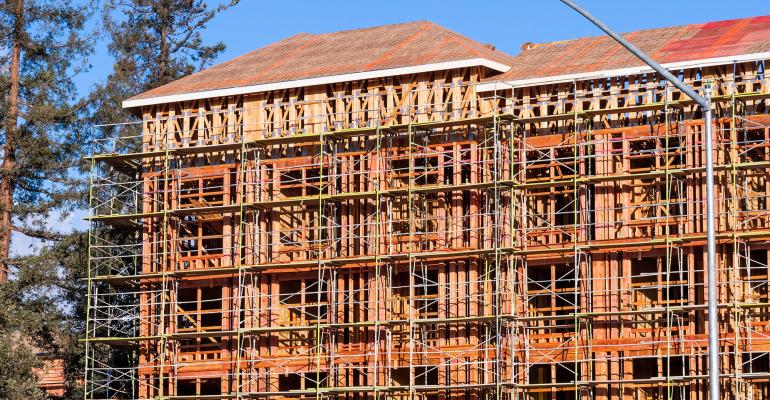There are a few ironies that arise from the past year’s pandemic events. First, it seems that despite how quickly the pandemic came upon us, it will take us months to set the ship right and reach full recovery. On one hand, as the Congressional Budget Office predicts, “Real GDP [will expand] rapidly over the coming year, reaching its previous peak in mid-2021 and surpassing its potential level in early 2025.”
But job performance is still showing the signs of uncertainty that mark our transition from slump to recovery. Some 916,000 jobs came on-line last month. But while “The number of unemployed persons, at 9.7 million, continued to trend down in March [it] is 4.0 million higher than in February 2020,” says the US Bureau of Labor Statistics.
In addition, multifamily property managers, owners and residents in all sectors of the housing market have to deal with the aftereffects of deferred rent payments or, for that matter, non-payment. The concept we’ve heard so often throughout the pandemic—the need for all of us to work together—truly comes home to roost in the plight of economically strapped renters. The challenges herein are particularly acute in the affordable housing market, the source of our second irony.
Since the beginning of the pandemic there have been a number of programs that IREM members shared with their residents to help ease the rent payment dilemma. These include the Emergency Rental Assistance Program offered by the U.S. Department of the Treasury and, on the affordable housing side, vouchers and rental assistance offered under Low-Income Housing Tax Credits.
One of the issues that remains is the disbursement of those funds. It’s become standard practice over the past year for property managers to check in with residents to see if they need help and find out what opportunities they’ve taken advantage of to relieve their fiscal shortfalls. There are now multiple funding mechanisms, in addition to those listed above, to allow residents to overcome that shortfall, from both the private and government sectors.
Unfortunately, there’s no standardized way to distribute relief funds either to the resident or the property owner. In some instances, they go to the renter, which means that, despite being earmarked for rental payments, payments may fail to reach the landlord. In other instances, the payments are going to the landlord, but with the requirement that rents be reduced by 25 to 35 percent. For larger, multi-regional owners and managers faced with regulations that vary by state and locality, this renders the solution almost unworkable in its confusion. For smaller owners and managers, the potential rent reductions can be financially crippling.
The affordable housing challenge
The National Low-Income Housing Coalition estimates that there’s a national shortage of more than seven million affordable homes for our nation's 11 million-plus extremely low-income families.
Now, over the past year, construction costs, especially for wood materials, have skyrocketed. Most affordable housing is stick-built, adding to the severe national shortage of affordable housing stock. The painful irony comes in the relief economically starved residents would realize through the creation of more affordable housing.
Of course, whether the property is low-income or market-rate, the relationship between property managers and residents is a solid one and, in at least 90 percent of cases, residents want to pay their rent and property managers want to help their residents. That, however, doesn’t preclude the relatively few bad actors who might attempt to work the system.
The dire plight of residents in their charge is uppermost in the minds of property managers and their approach to the issue is handled with the greatest sensitivity. However, as we’ve stated before in this space, a blanket national eviction moratorium on federally-funded housing helps no one in the housing chain—resident, owner, or building manager. And, just like the distribution of funds, it’s an intensely complex process that changes based on state, county, and the type of funding.
The national ban on evictions has been extended through June 30. That doesn’t mean evictions are impossible. If multiple attempts have been made to help residents and connect them with the appropriate relief sources, and the funding for the affordable unit is private, landlords do have a remedy in the courts. But states like California and New York have levied a complete ban on the process.
It’s our hope that the broad net of eviction protections might be rolled back slowly over the next few months to avoid the inevitable flood of eviction processes come summer. That would clearly be the most equitable approach to the situation, and the fairest for all involved.
But to an even larger point, it’s also our hope that, as the economy continues to grow and jobs nationally open up on a more regular basis, the crises of economic hardship will ease, construction will increase in all housing sectors, and the housing market will regain its footing.
Of course, the affordable housing sector will remain in crisis, a sad continuation of the need we faced prior to 2020, even as other market sectors surged. But this past year of national suffering has brought the issue into the foreground. It’s my hope that more investors and developers will seek greater opportunity in this underserved market, reaping both the financial and moral benefits to be found therein, and all renters of all income levels can realize their right to housing. Indeed, we all need to work together.
Chip Watts is 2021 president of the Institute of Real Estate Management. In addition, he serves as president and executive CPM for Watts Realty Co. Inc., in Birmingham, Ala.





